Strategic Fundamentals On Campaign Goals
Set goals that give clear direction to sales conversations
Campaign Goals
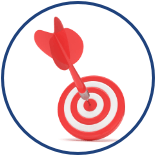
CAMPAIGN GOALS
The primary objective of any marketing campaign is always to turn an audience of potential customers into actual, paying customers. This might sound simple and straightforward but things in the world of marketing are rarely that.
Setting up campaign goals that define the sales process can help your business adjust its strategies to keep interest in your brand at a level sufficient enough to be profitable. To do that, there are a few basics about marketing goals that you need to understand first.
Why Do You Need Campaign Goals?
Why bother with setting up goals in the first place? This might sound elementary but having goals allow you to achieve two things with your marketing.
It Gives Your Efforts Direction
It goes without saying that everything your business does must be for a purpose. A marketing goal gives your efforts a clear objective to meet which, in turn, will quantify its level of success later on.
It Establishes Standards
Campaign goals will help you set up standards that your marketing efforts should follow. What kind of interest do you want to be generated from your marketing campaign? How do you think your audience will regard your brand once this campaign is over? These are just some of the questions that you need to keep in mind while defining your goals.
All in all, identifying your goals is all about answering one specific question: What are you trying to achieve? A lot of businesses do not understand what they are trying to do with their marketing. As such, they don’t have the proper approach towards their target audience which yields poor results.
The buyers' Journey
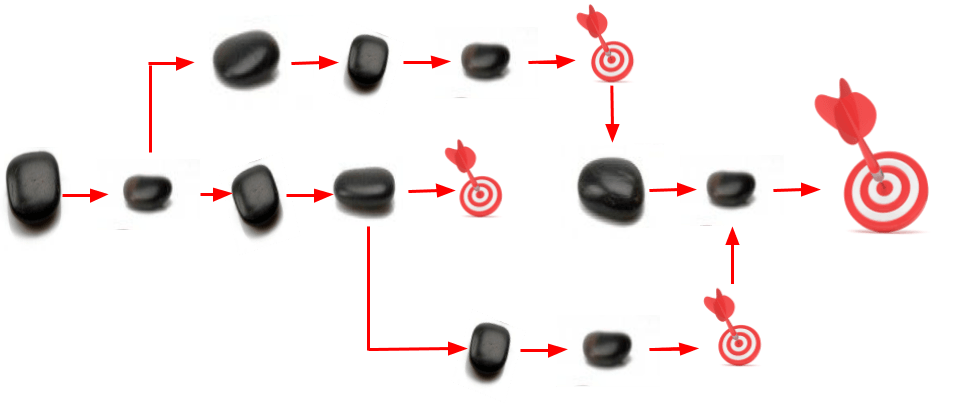
Buyers' Journey
Basically, a person can be two things in any marketing campaign.
- Prospective Client
These are your primary audience members. They have little to no experience with the brand and have low to zero interest in doing business with you. Also, they are the least bothered with new emails coming from your side as far as email marketing is concerned. - Paying Customer
These are the people whose loyalty you have won over and, as such, would need not a lot of convincing anything you might offer in the future. Also, in the field of email marketing, they are the most responsive as they quickly respond to new emails and will answer you if asked a question.
What does this all mean, then?
What these classifications imply is that you should find a way to engage both classes in a conversation that leads to sales conversion. Each of these personas has its own path to sales conversion to tread and you must define campaign goals that can meet the needs of both prospective buyers and paying customers.
There are a lot of variations for campaigns that you could use to target either persona. You could start with offering a value proposition and then segment your audience according to their interests. You can even re-establish contact with past customers or assign top leads to sales people.
The point here is to never lose sight of the fact that each audience member that comes your way has their own “goals” to achieve and that you are in the best position to help them do so. How you make your relationship as synergistic and transparent will determine the level of success your marketing campaigns will enjoy from.
What are Conversation Sequences?
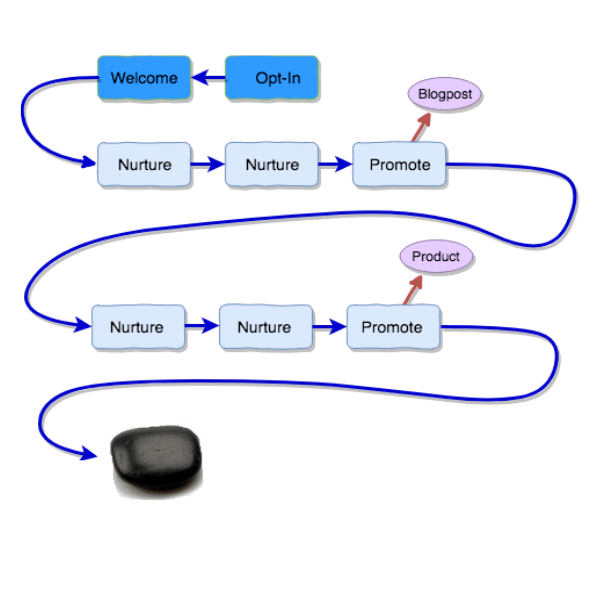
Nurture Sequence
The best way to lay out your sales conversion process is to treat it like an actual conversation. This is because conversations follow a certain narrative which basically means you can divide the entire process into various sequences for the customer/audience persona.
What you have to understand is that both personas have different conversation sequences. Audiences are more oriented towards conversations since their interest for your brand has to be nurtured through dialogue.
Customers, on the other hand, are more action-oriented. You already have their loyalty at most or their interest at the very least. This means that all you have to do with these people is to keep the hype up so they continue to patronize your business.
The beauty with adopting either conversation sequences is that it is easy to shift from one to the other depending on how your audiences respond.
You can automate the entire process using platforms like ActiveCampaign, MailChimp, ConvertKit, Aweber, Sendgrid,... are all great email marketing platforms for small-business owners. You can orient communication in a way, that sending messages let your customers and contacts take specific desired actions. Send out different emails automatically depending on how particular audience members respond and react to previous mails.
Contacts are displayed in lists primarily with their email addresses. So all email campaigns are triggered using your contacts email. Email automation is great for all your centric personalised conversation with your contacts.
Great conversation starters are opt-ins, signup forms and landing pages. Where after signup, email responders or email sequences take care of the conversation. Email centric conversations, which must go from the topic that they opted in for, and not veer too far from that topic.
Before you start, I recommend either to hand draw your conversation sequences with a pencil and paper or planning your email sequences out digitally with a tool like Google Draw.
An email sequence is conversation oriented and will contain pre-written emails that follow logically. It's your way to start the conversation and nurture your subscribers. A huge advantage is that you will do that without ever having to do any re-work, since your upfront written emails will be part of your sequence. The emails are send in sequence on autopilot and will include a time delay between nearly every email. Whether it’s minutes, hours, days, or weeks to make sure emails are delivered at the perfect time, rather than all at once.
The perfect time depends on your audience and the expectations you have set on your opt-in form. If you’re unsure, survey your audience to ask them what time frequencies they prefer. Or, test different time delays to see what works best for your audience.
The various paths or journeys your subscribers might take. Action-based or behavioral email automation is when you send automated emails to people based off their actions. If you’re using action-based automation in your email sequences, your subscribers will go down different paths or journeys depending on what they do.
When subscribers complete a 'sequence' till the end, they have reached a stepping stone you have layed out in the buyers' journey! They can now step up a stone to follow a new sequence and advance their journey.
Automation Map
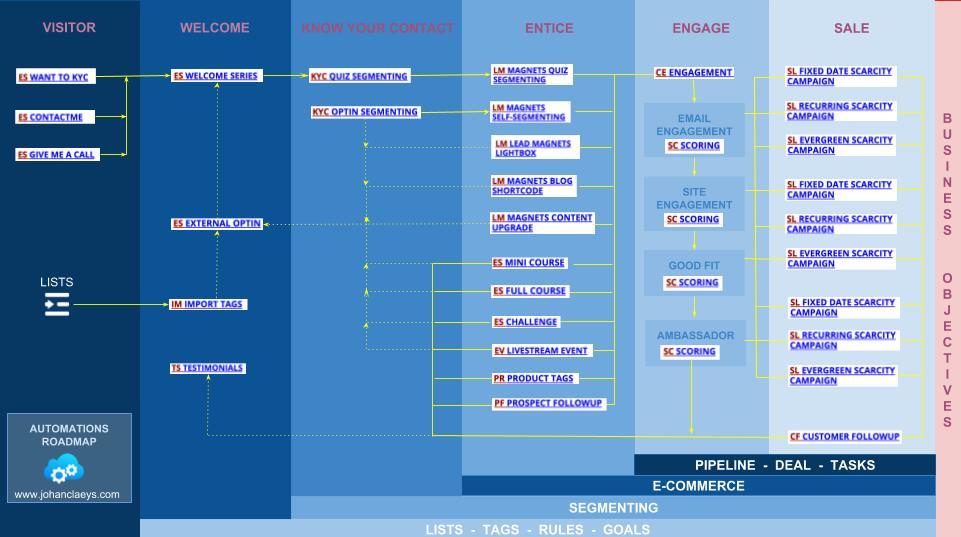
Map Out Automations
Once you plan series and have multiple sequences in your email automation platforms like for eg. ConvertKit or ActiveCampaign,… You can build an easy to follow automation map.
An email automation map becomes extremely important when you have lots of action-based automation. Your automation map should outline the different automations your subscriber could possibly take. This is a more behind the screens technical overview you have in place.
Marketing automation solutions, compared to email automation go further by even automating business processes through a sequence of events that apply to your entire business marketing strategy! Email Marketing solutions
focus on working from the inside out and all based on the contact's email.
A marketing automation map in for eg. ActiveCampaign is the first and only tool that lets you see how automation are connected to each other. That makes it easy to edit your marketing—and find new opportunities to grow your business. Map your automation strategy, see how automation are linked together.
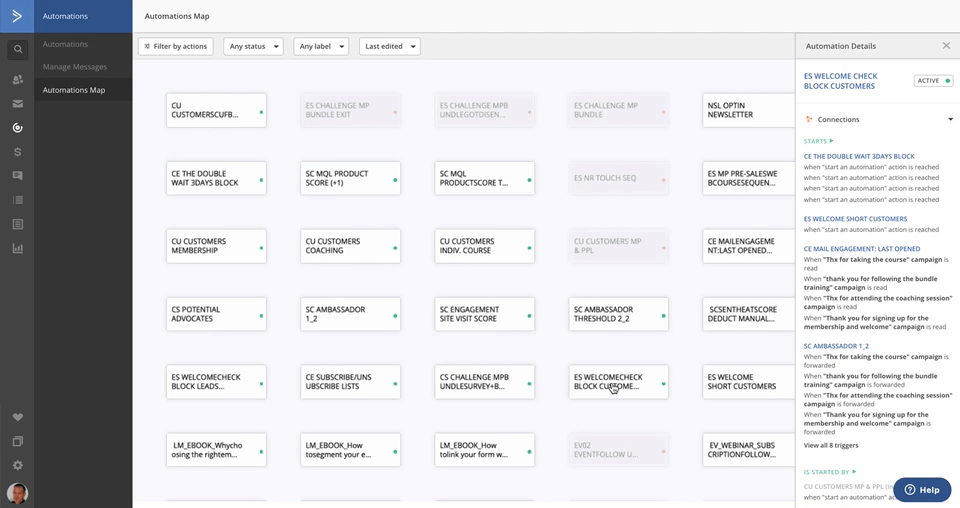
Marketing automation map
Large enterprises have long found value in 'marketing automation' technology and the good news is. It isn't just for big companies. Today Small and Medium-sized Businesses can through well-defined marketing automation and automation map compete with large organisations since it helps them to accomplish more, with less manpower and time.
Define Scoring Criteria
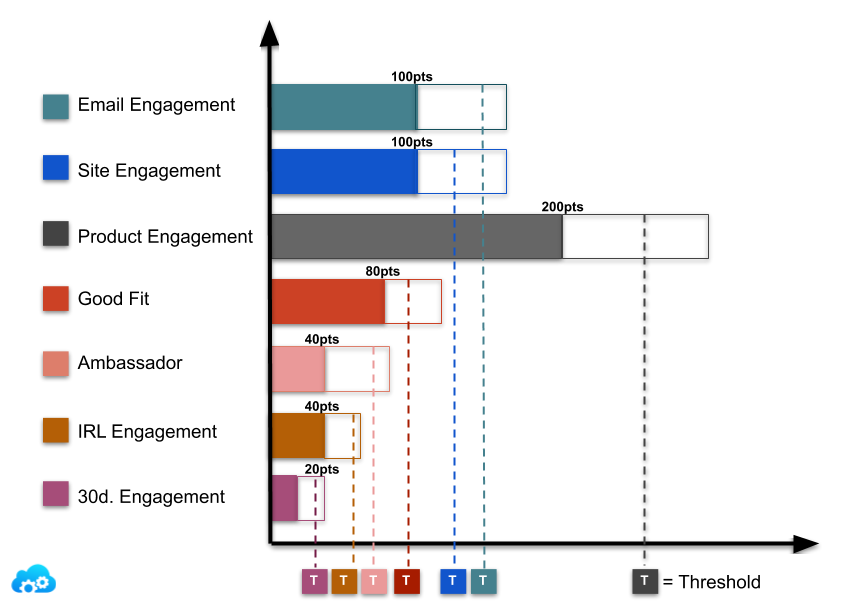
Scoring Criteria Thresholds
Do you know how to qualify leads for your sales team? Do you know how you will define ‘ready to buy’ contacts or organisations based on a mix of demographic, firmographic & behavioral data? Do you know who is engaged in your emails, website, products or services?
Have you identified & target leads for nurturing? Have you identified your fans, promoters and advocates? Do you know who are the referrals? The ones who do social media sharing? Do you know who are the people who purchased and come back for more? Your repeat customers?
Have you a system in place to recognise your marketing and sales qualified leads? Do you know how to track and prioritise those further in the purchasing process?
Scoring can help you give answers to these questions. If you love games, you will love scoring. Scoring is the ability to gamify your processes by attributing points. For example when someone opens an email, attributing 'one' point. When clicking the link in that same email, giving an additional three points. When visiting a high-value landing page or pricing page, deciding on giving an additional 50 points. For something else that means a lot, giving tons of points.
By assigning points to important touches with your contacts you can 'gauge' their location and progression in the buyers' journey. Once certain point levels reached you can apply tags, trigger automation, even generate deals.
Qualification process
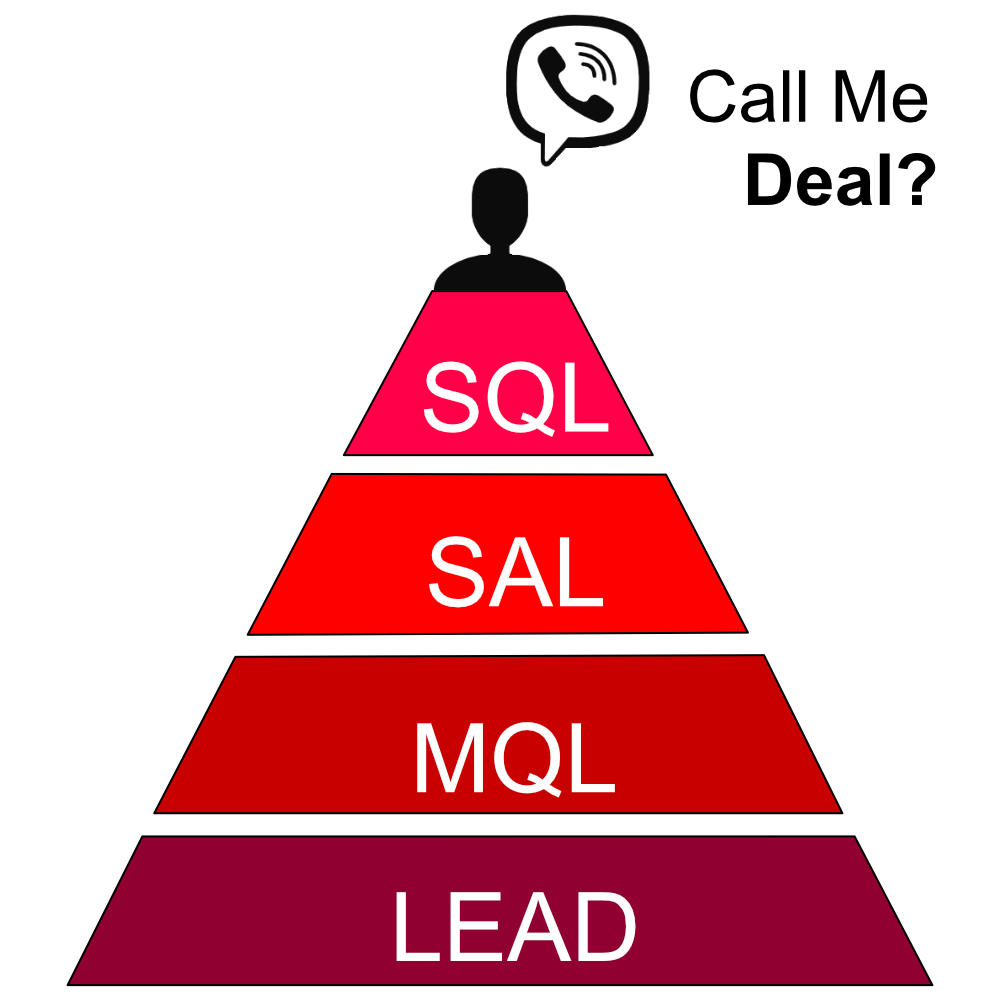
Lead Qualification Process
What are leads, exactly? The most basic definition of this is that it is a marker signifying that a certain person has shown interest in whatever you are offering to them. Thus, lead qualification is determining whether someone is interested enough in your business to transact with it.
Lead qualification is a systematic process to evaluate whether an individual or a company is able, ready, and willing to buy your products and services. Leads can be acquired through many different channels, from customer referrals to a form someone filled to gain access to an ebook or white-paper.
So why do you qualify a lead in the first place? Isn't a lead, a lead? Not exactly. Qualification involves determining whether a lead has a need for your product, the authority to make the purchase, and the money to execute a transaction.
The marketing team normally uses more than one approach to get leads to engage with the company and, therefore, demonstrate interest. You could after a welcome campaign, initiate a new email campaign that points to product pages on your website. If they mark interest, by opening the link in the email pointing to the page, you could say and indicate that they are 'interested' and by this are in the process of becoming marketing qualified.
If they don't open the 'product' link you can indicate them as 'disengaged'. However keeping them for now on the newsletter list. Making sure not to send product-related emails to these uninterested contacts.
Automated email sequences can help you to incentivize them to become marketing qualified. They can by taking action and filling out a form to download an ebook/white-paper or sign up for a free trial.
In order to be considered as marketing qualified lead, the person/company’s interest must be considered qualified. Interests can be qualified assigning scores, lists, tags, custom field attributions that are appended to subscribers. These will indicate the conversational progress with your leads and give insights on how far they are from being marketing qualified.
Once they are marketing qualified, you could send a 'Special offer' to complete the sale. Sending an email coupon in e.g. 'Buy today and save 20%!'. If they indicate their interest by clicking the coupon and accessing the product page, they become sales qualified (SQL).
Build Pipeline stages
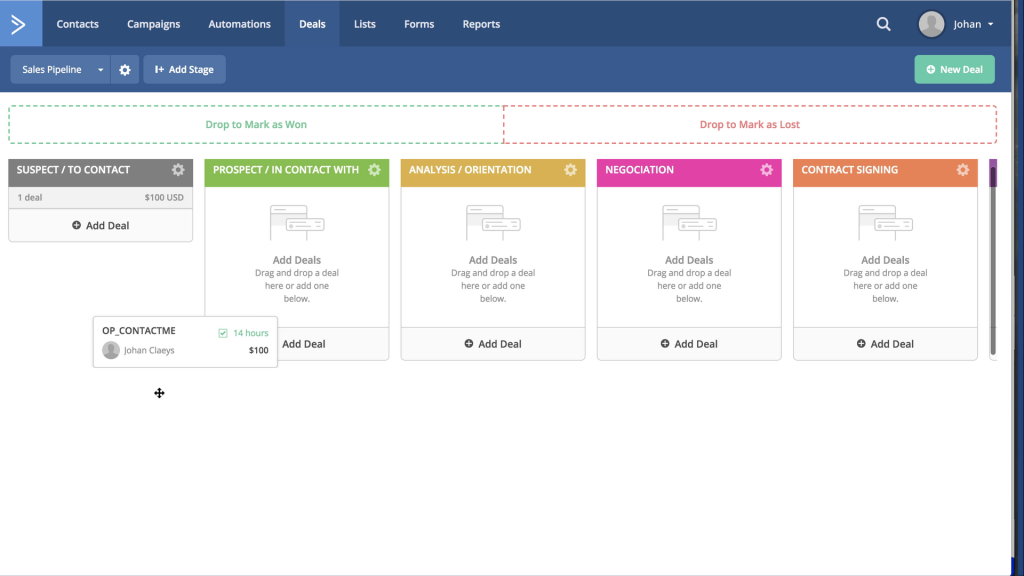
Pipeline Stages for Deals Follow Up
For sales qualified leads you organise an (automated) handoff of the lead from marketing department to sales department, based on a universal definition of a qualified lead, agreed upon by sales and marketing staff.
Creating a deal in your CRM is the best way to pass over leads for acceptance to sales. Further follow up in a sales process overview, a visual representation in the form of a pipeline. With stages where you can drag and drop deals, from your sales qualified leads. To the right pipeline stage and indicate deals lost or won.
The stages of the sales pipeline will be different from one company to another. However, there are some popular stages found in most buyer’s journeys.
Qualification - As was previously stated, this is where it is determined if a prospect has the interest and the means to do business with the company.
Analysis - Here, the sales agent and the prospect negotiate and identify a solution which would best fit the needs of the latter. In essence, this is the primary phase of the transaction made by the client with the company.
Negotiation - Here, the agent comes with a detailed quote detailing how that solution will be carried out, over what period of time, and, of course, how much. Further convincing and counter - proposals might also pop up in this part of the process.
Closing - The final phase, this merely involves the prospect finally making up their mind and signing the deal. From here on, contract signing, the prospect has become a customer.
Measuring your success at each part of the process can be done through a pipeline report. In this report, every transaction made will be broken down into the four different phases and each completion of one phase will be tallied.
You can expect for the qualification phase to have the highest number of counts while the closing phase will be have the lowest. As such, you can make one of your campaign goals to make sure that almost all qualified sales leads you generate will reach the closing phase.
Automate Deals followup
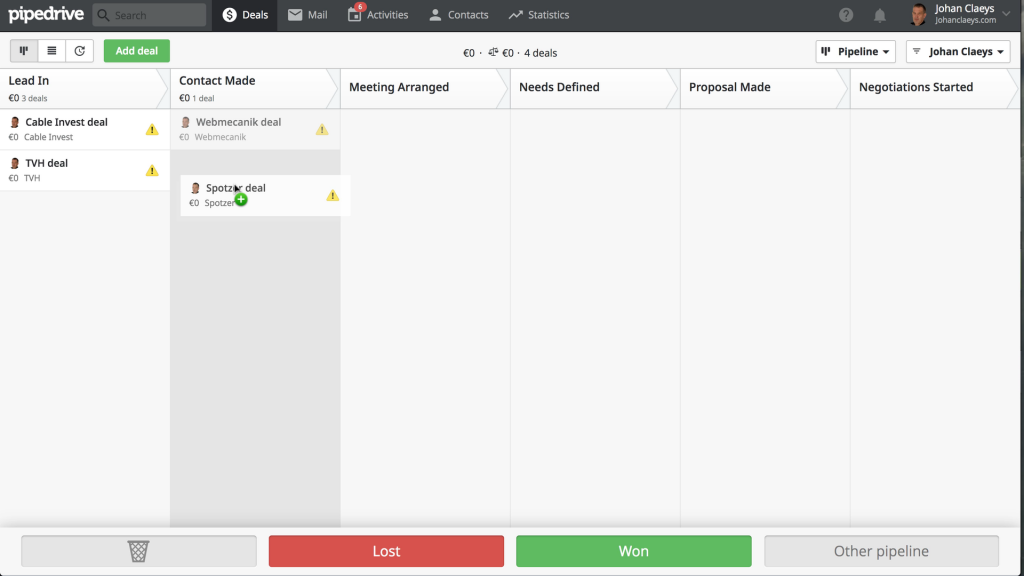
Deals / CRM
Sales monitors readiness to buy and ads the human touch whenever necessary through follow up tasks and activities such as meetings, calls, lunches, emails… and moving by this, deals forward to a closing.
The end of the sales process should not be the end of your relationship with that customer. Even transactions that you will usually consider as a “lost” should not be considered as a total failure. At best, it opens up an opportunity to other transactions that you can also track and monitor.
How this works is quite simple. Suppose that a subscriber actually clicked through linked and purchased a product. They, at that point, have closed the deal with you.
Now, you can keep them engaged to your business by offering better offers like limited discounts and coupons. If they click through these offers to your sales page again, they would have successfully closed another deal with the business.
The best part about followups is that conversion gets easier with every successful deal. In time, your most loyal of customers would not even need further convincing to support your new offerings.
Alternatively, you can do followups on those potential customers that failed to finish the sales process. There are ways to re-target these individuals through some special offers and you can even learn what went wrong with their last transaction.
There are also programs out there that can monitor your business’s active deals as well as activity statusses. This should help you prioritize contracts while also keeping track of how well your business is meeting its monthly campaign goals.
Without a doubt, making sure that target audiences actually commit to following the sales conversion process is going to take a lot of effort. Not only will you have to make sure that what you are offering to prospects is great, you also have to make sure that your clients have the means and the willingness to even initiate a transaction with you.
That being said, however, sales conversion can be made simpler if you can match your campaign goals with every step of the process. Knowing just how to target people depending on what phase of the process they currently are in would make all the difference in making your marketing campaigns as successful as they can be.
